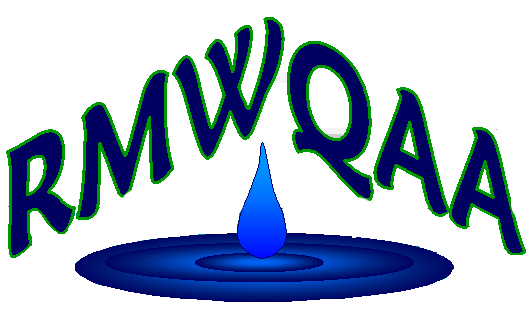May 6, 2017
Chlorophyll a. Standard Methods 10200H. EPA 445-447. Straightforward, right? Follow the method, and get the concentration of chlorophyll a in the sample. This seems straightforward, but I would argue, and many other scientists would agree, that it is not straightforward at all.
Chlorophyll a is a surrogate measurement for algal biomass at the community level, and is often used to evaluate the effects of nitrogen (N) and phosphorus (P) additions to a waterbody. Algae incorporate carbon (C), N, P, and other elements, leading to growth, proliferation, and more chlorophyll contained within the waterbody. While this process is fairly definitive, the composition of chlorophyll is not.
The photosynthetic pigments in freshwater algal cells include the chlorophylls (i.e, a, b, and c), the carotenoids (i.e., carotenes, fucoxanthin, and xanthophylls), and depending on the type of algae (i.e., cyanophyta and pyrrophyta), can also include phycobiliproteins or bacteriochlorophylls (Kirk 1994, NALMS 2017). Thus, when a lab is asked to measure chlorophyll a in a water sample, how confident are they that the reported concentration is only chlorophyll a, and not all these other components?
The basic chlorophyll a methods listed above try to account for the numerous other colorful components of algae (pigments) that could potentially be recognized by the spectrophotometer or fluorimeter which may confound the chlorophyll a concentration. In addition, photosynthetic pigments begin to degrade soon after collection so knowing the quantity of active versus degraded pigments is important. Acidification can account for the degradation of chlorophyll to pheophytin, but how can a lab be certain that the chlorophyll a concentration measured with one method is equivalent to the concentration measured with a different method?
The logical answer is a chlorophyll a standard. Chlorophyll a standards are available through a number of sources, but their actual concentration “as chlorophyll a” is not always clear. The standards are typically created through pulverization of spinach, or other chlorophyll-rich leaves, and can be in the form of a solid or liquid. Instructions on how to use the standard are rarely provided, and manufacturers provide little detailed information for their use. Often, these standards do not result in a specific concentration of chlorophyll a, only a concentration of ground spinach leaves. Numerous labs can measure the same “standard”, but who is to say the actual concentration of chlorophyll a?
These uncertainties in quality assurance provided the impetus for the Chlorophyll a Round Robin Event conducted by the City of Northglenn in 2015 (Taylor, et al. 2015). The RMWQAA’s concern in this methodology is not unique, as The State of Florida reiterates the same concerns regarding the numerous available methods and the variety of ways the data can be handled in “Applicability of Chlorophyll a Methods” (FLDEP 2011). A total of 11 analytical laboratories participated in the event, each reporting their chlorophyll a result for a laboratory split sample. The “corrected” (i.e. pheophytin correction taken into account) chlorophyll a values ranged from 77.6 to 162 mg/L, while labs reporting uncorrected chlorophyll a had a much larger range from 10.8 to 178.9 mg/L. These results highlight the uncertainty in laboratory and methodological approaches and confounds the true answer.
While the true concentration remained elusive, the real concern comes in to play when regulatory agencies are making decisions based on these data. Total Maximum Daily Limits (TMDLs) for nutrients are being determined from the chlorophyll a data resulting in more stringent nutrient limits for dischargers to these waterbodies. Thus, the question arises… Are regulatory decisions based on data from comparable chlorophyll a methods, or are different methods being used, potentially skewing the results? Furthermore, are laboratories confident in their results for chlorophyll a and do data users understand the uncertainty associated with the results? All of these questions should be considered before implementing regulatory decisions such as a TMDL that could dramatically impact limits for dischargers.
References
Florida Department of Environmental Protection (FLDEP). 2011. Applicability of Chlorophyll a Methods. DEP-SAS-002/10. October 24, 2011.
Kirk, T.O., 1994. Light & Photosynthesis in Aquatic Ecosystems, Second Edition. Cambridge University Press, New York, NY, 509 pages.
North American Lake Management Society (NALMS). 2017. Chlorophyll Analysis. The Secchi Dip-In. From: http://www.secchidipin.org/index.php/monitoring-methods/chlorophyll-analysis/ accessed 5/1/17.
Taylor, E., Guilmette, C., Rhodes, E. 2015. Chlorophyll-A Round Robin. City of Northglenn Water Quality Laboratory.
Natalie Love is the Laboratory Director for GEI Consultants, Inc's Laboratory. GEI conducts Whole Effluent Toxicity (WET) testing, benthic macroinvertebrate identifications, and low level nutrient analysis for Regulation 85 and other local monitoring.
 Welcome to the
RMWQAA Website!
Welcome to the
RMWQAA Website!  Welcome to the
RMWQAA Website!
Welcome to the
RMWQAA Website!